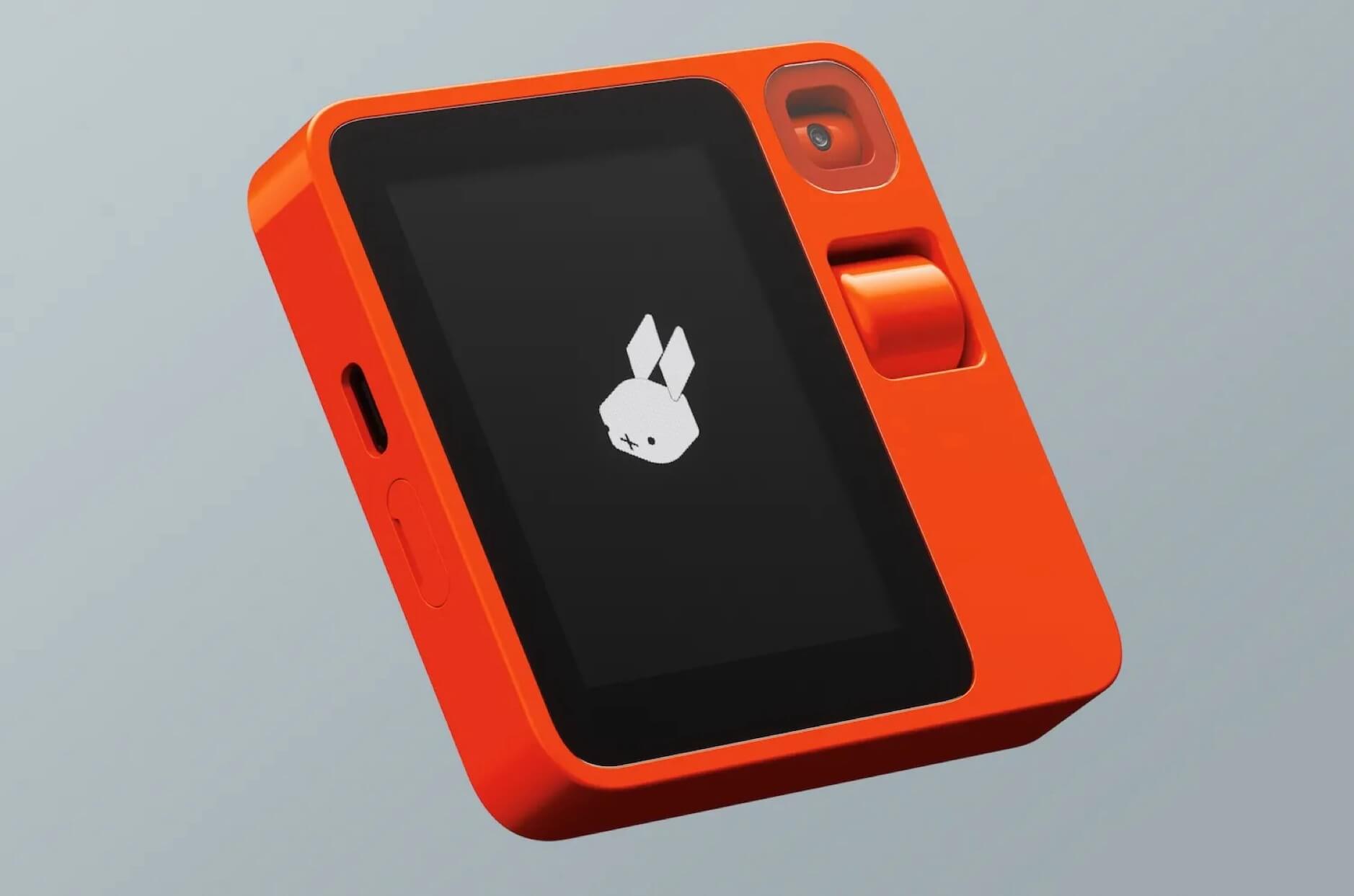Der rabbit r1
Die Idee eines zweiten (mobilen) Geräts neben dem Smartphone, das Aufgaben gleichwertig zum Telefon erfüllt, ist natürlich absurd. Und trotzdem verweilte mein Finger heute auffallend lange über dem Pre-Order-Button.

Zugegeben: teenage engineering verpackte den rabbit r1, eine AI-Assistenz in knalliger Anti-Playdate-Farbe und mit starkem Tamagotchi-Vibe, auf grandiose Weise. Das drückt alle meine Buttons.
„It’s me, hi. I’m the problem, it’s me.“
Selbst wenn es letztlich nur ein niedlicher, ChatGPT-ähnlicher PalmPilot wird, wäre mir das 200 Euro wert (was ohne Abo-Modell schlicht viel zu preiswert ist, um langfristig erfolgreich zu sein). Aber der rabbit r1 strebt nach mehr.
Rabbit’s approach here is pretty clever. Getting anyone to support a new operating system is tough, even if you’re a tech giant, and the LAM way subverts that by just teaching the model how to use apps. More broadly, we’re seeing a rash of new AI-powered hardware coming to the market, but too often, all those gadgets do is connect to a chatbot. Rabbit is, by contrast, more like a super app — a single interface through which you can do just about anything. What ChatGPT could be to web search, Rabbit OS could be to the app store. There are a thousand complications and caveats to that dream, of course, but it’s an interesting dream.
David Pierce | The Verge
Ich erwähne ihn also hier, weil KI das etablierte Smartphone-Design – sowohl in Hardware als auch in Software – herausfordert. Es überraschte mich nicht, dass wir zuletzt den Action-Button bekamen (und dieses Jahr eventuell noch einmal anders zugreifen). Ein Button ist so hervorragend „frictionless“.
Smartphone-Software hat im letzten Jahrzehnt unzählige Funktionen absorbiert, die zuvor individuelle Hardware erforderte. Ihr kennt die Bilder. Inzwischen ist Software jedoch so weit fortgeschritten, dass sie aus dem Rahmen der gängigen App-Interfaces ausbricht, oder eher „ausbrechen könnte“, wenn unsere Smartphones mehr App-übergreifend arbeiten dürften.
The backend uses a combination of large language models to understand your intent (powered by OpenAI’s ChatGPT) and large action models developed by Rabbit Inc., which will carry out your requests. These LAMs learn by demonstration—they observe how a human performs a task via a mobile, desktop, or cloud interface, and then replicate that task on their own. The company has trained up several actions for the most popular apps, and Rabbit’s capabilities will grow over time.
Julian Chokkattu | Wired.com
Konkurrenz für den r1 ist natürlich kein Smartphone, sondern die Apple Watch. Als Wearable hat sie bereits alle Probleme gelöst, die dem r1 noch schlaflose Nächte bereiten – angefangen bei „always online“, pfeilschneller Hardware und der privilegierten Verbindung zum iPhone.
Wie fantastisch wäre es, wenn Apple seine bereits etablierte Hardware-Positionierung der Uhr nutzt, um nun auch AI-Software in Pole-Position zu rollen?